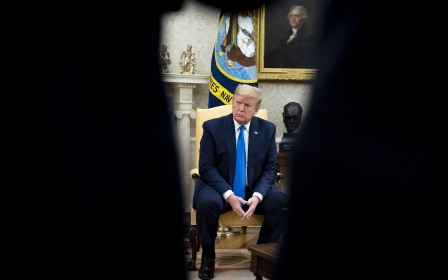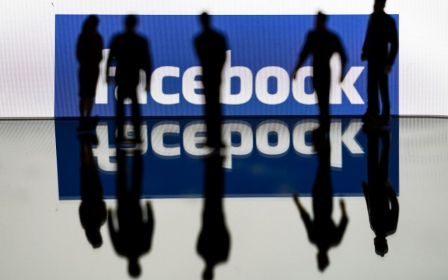Iran earthquake leaves at least two dead

At least two people have been killed and dozens injured in Iran after an earthquake struck early Friday near the country's highest peak, shaking the capital Tehran.
The US Geological Survey said the shallow 4.6 magnitude quake hit at 00:48 (20:18 GMT) near the city of Damavand, about 55km east of Tehran.
Scores of the capital's residents fled buildings for the safety of the city's streets and parks, AFP journalists reported.
Many spent the rest of the night sleeping in their cars, apparently too fearful to return to their homes.
Some wore face masks, a sign of the times in a country already struggling to contain the Middle East's deadliest outbreak of the coronavirus pandemic.
New MEE newsletter: Jerusalem Dispatch
Sign up to get the latest insights and analysis on Israel-Palestine, alongside Turkey Unpacked and other MEE newsletters
The tremor struck as Iranians were either sleeping or resting after iftar, the meal breaking the daytime fast observed by Muslims during the holy month of Ramadan.
"We were sitting down when the earthquake struck," 45-year-old Tehran resident Ahmad told AFP.
"We felt it completely shaking (the building), and then we all went out of the house together to be outside and not to be in danger if an aftershock struck."
His wife Maryam, who like him was wrapped in a blanket, said they escaped the apartment using the stairwell.
"We quickly took the children by their hands and got out," said the 37-year-old housewife.
Coronavirus crisis
Health ministry spokesman Kianoush Jahanpour said on Twitter that the tremor had claimed the lives of two people.
He called on people to "keep calm" and to follow safety guidelines.
Authorities also assured the public that there was no shortage of fuel as people rushed to petrol stations to fill up.
Among the dead were a 21-year-old woman in Tehran who suffered heart failure during the earthquake, and a 60-year-old man in Damavand, killed by a head injury, officials told Reuters.
Tehran's governor general Anoushirvan Mohseni-Bandpey told state TV that only four of the 38 injured had been hospitalised.
The USGS said the quake struck at a depth of 10km. Its epicentre was south of Mount Damavand, a largely inactive volcano, which at 5,671m is Iran's highest peak.
Tehran University's Seismological Centre said the quake had a magnitude of 5.1 and was at a depth of 7km.
It reported a series of aftershocks, the most powerful measuring 4.0.
Deadly history
Iran sits on top of major tectonic plates and experiences frequent seismic activity.
A 5.7 magnitude earthquake that rattled the western village of Habash-e Olya on 23 February killed at least nine people over the border in neighbouring Turkey.
In November 2017, a 7.3-magnitude quake in Iran's western province of Kermanshah killed over 600 people.
In 2003, a 6.6-magnitude quake in southeastern Iran levelled the ancient mud-brick city of Bam and killed over 25,000 people.
Iran's deadliest quake was a 7.4-magnitude tremor in 1990 that killed 40,000 people in northern Iran, injured 300,000 and left half a million homeless.
In December and January, two earthquakes struck near Iran's Bushehr nuclear power plant.
Iran's Gulf Arab neighbours have raised concerns about the reliability of the country's sole nuclear power facility, and the risk of radioactive leaks in case of a major earthquake.
Middle East Eye delivers independent and unrivalled coverage and analysis of the Middle East, North Africa and beyond. To learn more about republishing this content and the associated fees, please fill out this form. More about MEE can be found here.





